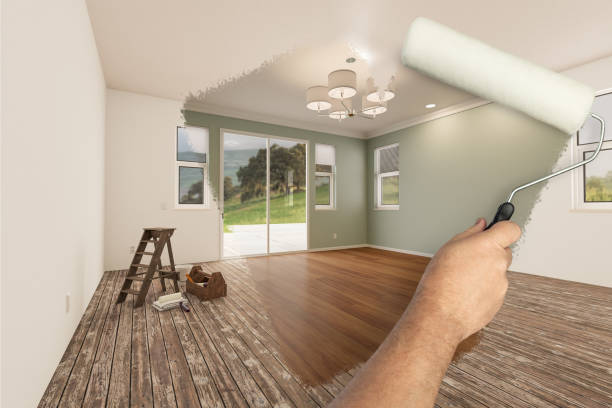Renovating a home can be an exciting yet overwhelming experience. House renovations offer the opportunity to transform a space into something more functional, aesthetically pleasing, and personalized. However, without proper planning and budgeting, renovations can quickly become stressful and expensive. Fortunately, with the right strategies, you can achieve affordable house renovations that are both practical and enjoyable.
Planning Your Renovation
The foundation of a successful house renovation is careful planning. Before starting any physical work, take the time to assess your needs and goals. Identify which areas of your home require attention, and prioritize projects that will add the most value or functionality. Creating a detailed plan helps prevent costly mistakes and allows you to allocate your budget wisely.
Budgeting is another essential aspect of planning. Determine how much you are willing to spend and factor in a contingency of at least 10-15% for unexpected expenses. Be realistic about what can be achieved within your budget, and consider whether certain upgrades can be postponed for a later stage. Planning also involves researching materials, designs, and contractors to find the best options that suit your financial and aesthetic goals.
Choosing Cost-Effective Materials
One of the most significant factors in affordable house renovations is the choice of materials. High-end materials can dramatically increase costs, so it is important to look for alternatives that provide quality without breaking the bank. For example, laminate or engineered wood can be used instead of hardwood flooring, and ceramic tiles can substitute for natural stone in bathrooms and kitchens.
Repurposing and upcycling existing materials is another smart way to save money. Old furniture, cabinets, or even doors can be refurbished with a fresh coat of paint or updated hardware. Thrift stores, salvage yards, and online marketplaces often offer discounted building materials that can be creatively incorporated into your renovation. Choosing durable, low-maintenance materials also reduces long-term costs, making your renovation both affordable and sustainable.
Prioritizing Renovation Projects
When working with a limited budget, it is crucial to prioritize projects that have the most impact. Focus on areas that will enhance daily living, such as the kitchen, bathrooms, or living spaces. Cosmetic improvements like painting, updating fixtures, or replacing flooring can make a significant difference without a major investment.
Consider tackling projects in phases. Instead of renovating the entire house at once, start with one room or section. This approach spreads costs over time, reduces stress, and allows you to make adjustments based on experience and budget availability. Prioritizing also ensures that essential repairs are addressed before cosmetic upgrades, preventing small problems from becoming costly issues in the future.
Hiring Professionals Wisely
While some house renovations can be done as DIY projects, certain tasks require professional expertise. Hiring qualified contractors, electricians, and plumbers ensures that work is done safely and meets building codes. To keep costs manageable, obtain multiple quotes and compare services. Look for professionals who are transparent about pricing and willing to provide detailed estimates.
Clear communication with contractors is essential to avoid misunderstandings and delays. Provide a detailed plan and timeline, and discuss potential challenges upfront. Maintaining an open line of communication reduces stress and ensures that everyone involved is aligned with the renovation goals. If budget constraints are a concern, consider hiring professionals only for specialized tasks and handling simpler updates yourself.
Maximizing Efficiency with Design
Smart design choices can make house renovations more affordable and less stressful. Open floor plans, multifunctional furniture, and clever storage solutions can improve functionality without extensive construction. For example, using shelves, built-in cabinets, or under-stair storage optimizes space and reduces the need for costly expansions.
Neutral colors and timeless designs are also cost-effective because they remain appealing over time. Avoid overly trendy materials or bold color schemes that may require frequent updates. Efficient lighting, energy-saving appliances, and sustainable solutions not only reduce utility costs but also add long-term value to your home.
Staying Organized Throughout the Renovation
Organization is key to minimizing stress during house renovations. Keep a detailed schedule, track expenses, and document progress with photos or notes. Staying organized allows you to monitor the renovation timeline, identify potential delays, and ensure that the project stays within budget.
Creating a dedicated workspace for tools and materials prevents clutter and helps streamline the renovation process. Labeling items and keeping an inventory reduces the chance of purchasing duplicates or losing important materials. By maintaining organization, you can focus on the creative aspects of your renovation rather than getting overwhelmed by logistics.
Tips for DIY Projects
Incorporating DIY projects into house renovations can significantly reduce costs and provide a sense of accomplishment. Simple tasks like painting walls, installing shelves, or updating cabinet hardware are manageable for most homeowners. Start with small projects to build confidence and gradually tackle more complex tasks.
When attempting DIY work, ensure you have the proper tools and safety equipment. Watch tutorials, read guides, and seek advice from experienced individuals. While DIY can save money, it is important to recognize limitations and avoid taking on projects that require professional expertise, as mistakes can lead to higher expenses in the long run.
Managing Stress During Renovations
House renovations can be stressful, especially when unexpected challenges arise. To maintain a positive mindset, focus on what you can control and celebrate small milestones. Taking breaks, practicing patience, and maintaining open communication with family members or contractors helps prevent burnout.
Flexibility is also crucial. Delays and setbacks are common, so having a backup plan and remaining adaptable ensures that the renovation process remains manageable. Remember that the end goal is to create a space that is comfortable, functional, and reflective of your personal style. Maintaining perspective can transform the renovation from a stressful experience into a rewarding journey.
Final Thoughts
Affordable house renovations are achievable with careful planning, smart choices, and a focus on priorities. By selecting cost-effective materials, hiring professionals wisely, staying organized, and incorporating DIY projects where possible, you can minimize expenses while achieving significant improvements.
